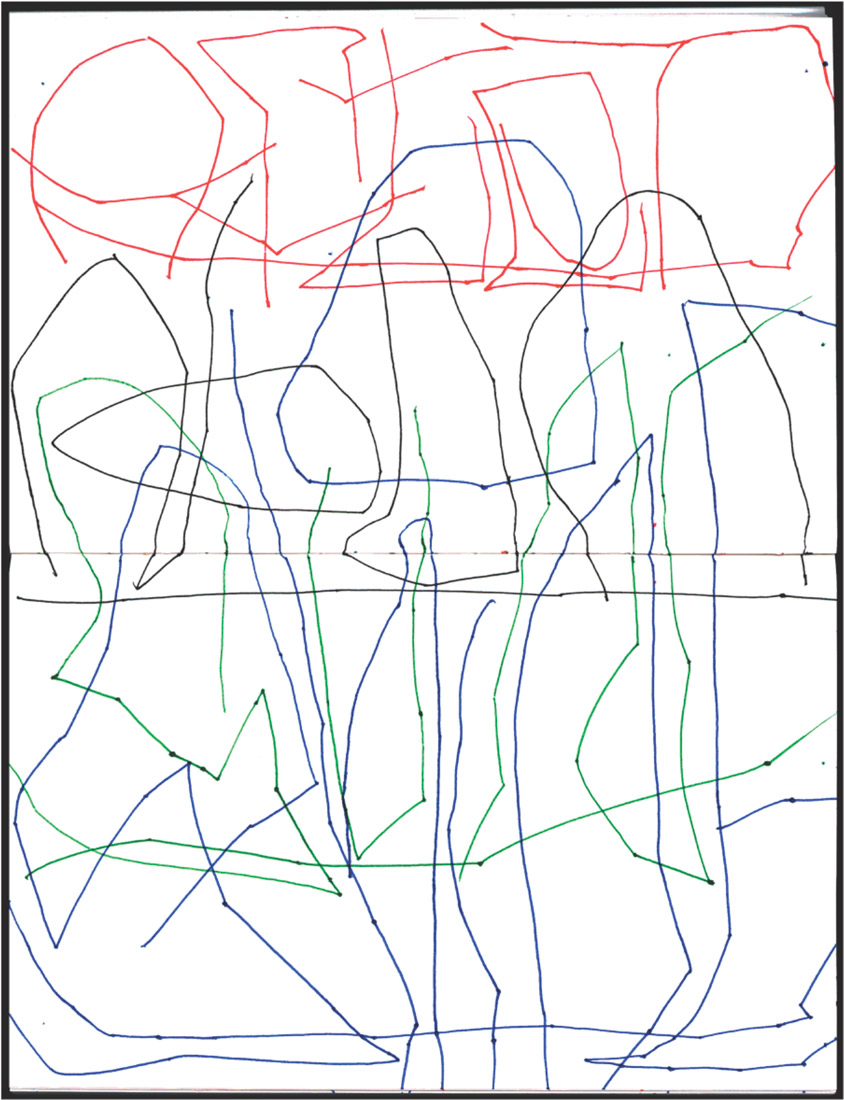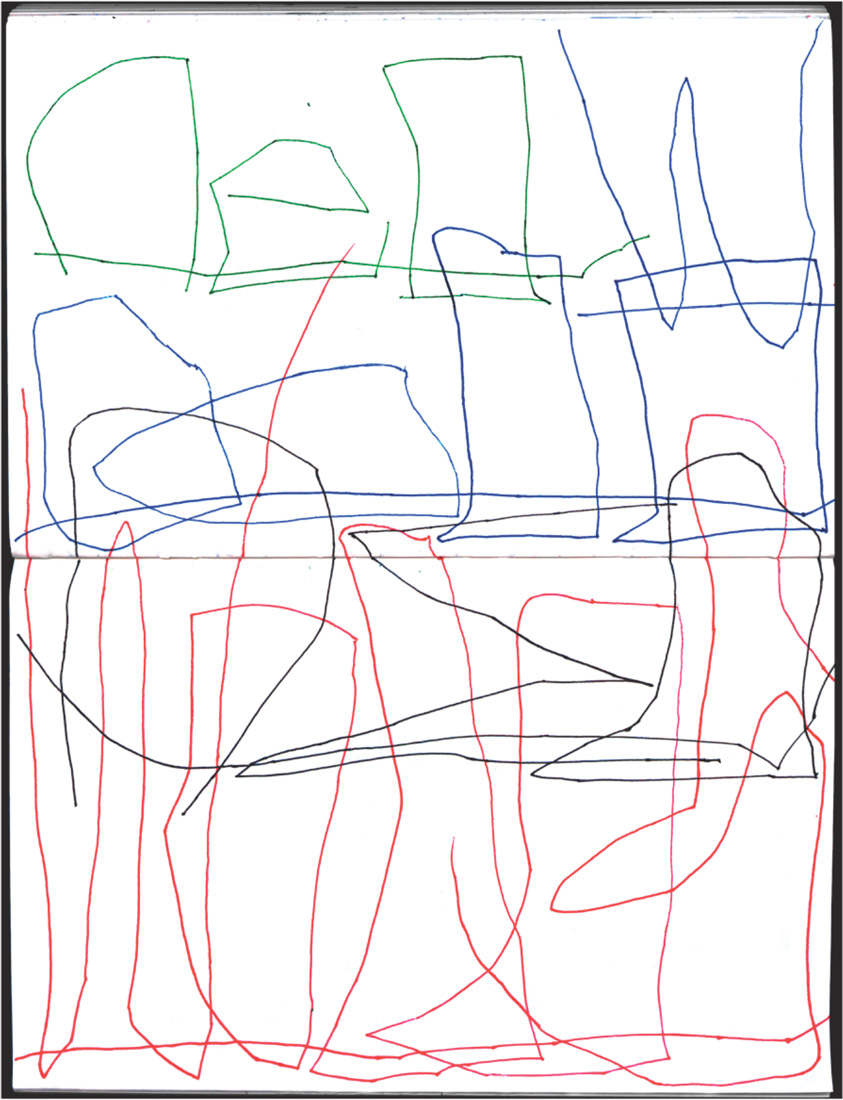

Robert Grenier
AFTER/NOON/SUN/SHINE and RED W/OOOD/RED/WOODS
On being invited to choose one and say about it – I wanted to do this – isolate and examine one closely – so I leafed through, bookmarking candidates. Trying to single out one is a great way to spend time with this book – but what’s my criteria for choosing? Next day, I marked more pages, subtracted one or two. Next day – change of mood/ start over – all new bookmarks. How had I missed the humor? If my criteria is simply ‘what gets my attention’ – my criteria is fickle. Ones I passed up yesterday intrigue me today. This thick book is chocked full, every page different – trying to narrow it down to one: no fun. Let them all roam freely unchosen. What really interests me is: what ARE these things that engage both reading and looking – two acts that have been traditionally kept apart like twins separated at birth. Does the fact that artists/writers are gravitating toward this form mean that our brains are becoming more capable of processing these two at once?
Okay, I’ll play. I open the book at random, here’s #172 and 173 / Robert Grenier. Lines, simultaneously drawn and written. The difference between drawing and writing at the level of marks-making is the kind of thing I like to roll over in my mind. It takes me back into history and pre-history, to marks that were made at the beginning of civilization. Was there, before languages were fully developed, a solid boundary between looking and reading? I’m not searching for an answer, I’m reveling in the space of the question. Bringing my attention back to Grenier’s page, I look at how these lines are behaving with one another, what are the internal dialogues among them? I don’t have a sense that they’re describing something extraneous – and I suspect the lines are based on words, but unreadably. Now I want to think about unreadable writing.... This is what good poems do, no matter what the form: they offer things to think about, not through answers but by way of the quests they provoke.
Later, I went to a chapbook festival: dozens of tables offered small, beautifully printed books on nice paper. I leafed through many and they were all pretty much identical: skinny lines of type followed the leader down the page. The books were all visually the same no matter what the content. Visually numbing! The Last Vispo came to mind. What if these neat little books with their polite covers contained some visual poems! What if every traditional chapbook was interspersed with a few look-reads rather than all read-reads? On that nice paper, so carefully printed....